Gardening enthusiasts and agricultural experts have widely discussed Epsom salt’s effectiveness in promoting tomato plant growth. Chemically known as magnesium sulfate, this substance is popularly referred to as a magnesium and sulfur supplement that can increase the health and productivity of tomatoes. This is because it plays an essential role in chlorophyll production through magnesium and protein synthesis through sulfur which are crucial processes for plant growth. Scientific principles underlying these claims will be analyzed, empirical studies investigated, and guidelines on applying Epsom salt will be provided. Gardeners who understand its benefits and possible dangers will choose ways to maximize their harvests when growing tomatoes.
What Is Epsom Salt and How Is It Used in the Garden?
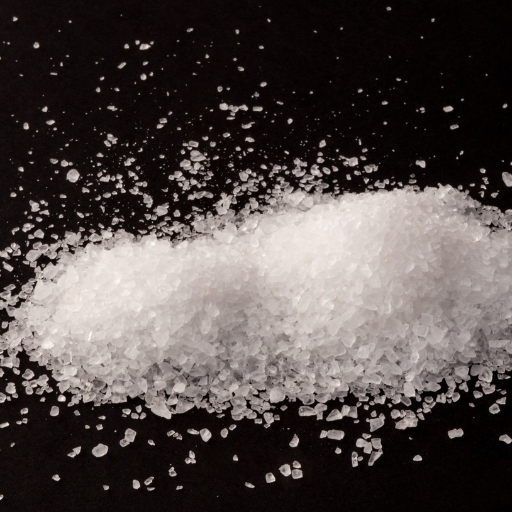
Epsom salts, also known as magnesium sulfate, is a naturally occurring mineral made of magnesium, oxygen and sulfur. In gardening Epsom salts are often used as an additive to soil to fix magnesium deficiency and keep plants healthier. The salt may be sprinkled onto the earth or dissolved in water for foliar application. A common practice with tomato plants is to pour 1-2 tablespoons of Epsom salt into one gallon of water and drench the plant by soaking its base. Alternatively, foliar spraying can be done once or twice per month during the growing season. Both ways are designed for direct delivery of important nutrients into the plant which result in great chlorophyll production, nutrient uptake and overall plant wellness.
What Makes Up Epsom Salt?
Epsom salts are chemically composed of oxygen (O), sulfur (S) as well as magnesium (Mg). This implies that each molecule of Epsom salt contains one sulfate ion (SO₄²⁻), one magnesium ion (Mg²⁺), and seven molecules of water (H₂O); hence it has a characteristic hydrated form whereby it consists of seven water molecules. Magnesium constitutes about 10% by weight while sulphur makes up approximately 13% by weight of Epsom salts. Technical properties of Epsom salt play a role in plant physiology. Magnesium is required for chlorophyll synthesis, which is vital in photosynthesis, while sulphur helps in the formation of amino acids, proteins, and enzymes, among others, that form important constituents in plants essential for growth and productivity when they are used correctly.
How Do You Use Epsom Salt in the Garden?
To use these salts apply them directly at needed rates after first establishing your garden’s specific needs with a soil test. For general purposes mix 1-2 tablespoons of this solution per gallon that must be evenly distributed around your growing area beside every plant. Thus, this is a drench which can be used to improve magnesium levels in the soil. Additionally, Epsom salt may be dissolved in water to make a foliar spray that can be applied monthly or bi-monthly when growing plants. This helps with vegetative growth by allowing for quick absorption of magnesium into the leaves thus improving growth and yield of crops produced. Over-application of fertilizer should be avoided.
Advantages Of Magnesium Sulfate For Soil
Magnesium sulphate has several agronomic benefits that improve both plant health and soil quality. The greatest advantage is its high solubility, meaning that it offers plants readily available magnesium and sulfur sources. It constitutes a central part of the chlorophyll molecule hence an important element in photosynthesis and activating many enzyme systems in plant metabolism. On the other hand, sulfur is necessary for synthesizing amino acids such as cysteine and methionine, which form proteins’ building blocks. Again, it plays a role in vitamin synthesis and nodule formation on legumes involved in nitrogen fixation. Research has shown that optimum application rates of magnesium sulfate (usually 1-2 tablespoons per gallon of water) lead to increased chlorophyll content, improved protein synthesis and generally more vigorous plants. Therefore, if used as a soil amendment magnesium sulfate would increase crop vigor leading to higher agricultural production.
How Does Epsom Salt Affect Tomato Plants?
A lot of positive things are spoken about Epsom salts, which is chemically magnesium sulphate, and its effect on tomato plants. One of the main uses is for correcting magnesium deficiency indicated by yellowing leaves that start at the bottom and work their way up the plant. Moreover, photosynthesis process requires magnesium with chlorophyll being present in magnesium rich plants. Further sulfur found in Epsom salt helps in synthesis of proteins and formation of essential enzymes and vitamins. It is a way to improve nutrient uptake; increase fruit production while promoting stronger growth. Normally dissolving 1-2 tablespoons of Epsom salt into a gallon of water determines how much you should water your plants or use it as a foliar spray. Ensure you follow the recommended dosage to avoid any possible nutrient imbalances.
Reasons for Using Epsom Salt on Tomato Plants
The advantages associated with using Epsom salts for tomato plants are mainly due to its high content of magnesium and sulfur. The first reason concerns that fact that Magnesium plays a major role in chlorophyll production, which is important during photosynthesis. Better photosynthetic ability provides energy within the plant resulting in better growth processes. Secondly, Sulfur plays a role in forming amino acids and proteins leading to general animal/plant development.
Some studies have shown how effective Epsom salt can be when applied to tomatoes as nutrients. Commonly recommended application rates range from 1-2 tablespoons per gallon of water. This concentration ensures enough nutrition without causing imbalance problems among nutrients within the plant system. Experimental findings show that this method could lead to more number of fruits per plant with larger size per fruit, greener leaves and robust healthier looking plants generally across different growing seasons. Besides this, applying Epsom salts can help improve soil structure by aiding in breaking down compact soils leading to improved root penetration and nutrient uptake.
In conclusion, Epsom salts benefit tomato plants by rectifying magnesium deficiencies, promoting healthy photosynthesis, and improving overall plant resistance and productivity.
Magnesium and Sulfur Effects on Tomato Growth
Tomato plants also require adequate amounts of magnesium and sulfur to facilitate their development. Magnesium is an essential component of chlorophylls for photosynthetic activities. The plant utilizes the sugars produced during the process for various energy needs while the other elements are used in building up plant structures. Technical parameters from recent studies suggest that optimal soil magnesium concentration should range from 50 to 100 ppm.
On the other hand, sulfur is necessary for synthesizing amino acids, proteins, and enzymes. It has several roles in metabolism, including making chlorophyll and assimilating nitrogen. According to research findings, soil sulfur levels should be maintained between 10 and 30 parts per million (ppm).
Furthermore, evidence supports Epsom salt (magnesium sulfate) application as a viable means of getting these nutrients into tomatoes. This implies that one requires about 1-2 tablespoons of Epsom salts per gallon of water, which can supply enough nutrients without imbalance occurring [14]. Together, proper management of these micronutrients can help improve fruit setting, increase fruit size, improve leaf colouration, or just increase overall plant vigour.
Is Blossom End Rot Prevented by Epsom Salt?
Blossom end rot, a physiological disorder in tomato plants, is marked by decay at the blossom end of the fruit due mainly to calcium deficiency. Although Epsom salt offers magnesium and sulfur which are useful in many aspects of plant health, the problem of calcium requirements remains unaddressed. It is important because it forms cell wall and provides stability for cells as well as their absence causes abnormal cell development inside fruits. Technical parameters stipulate that preventing blossom end rot requires maintaining soil calcium levels within the optimal range of 1,000 to 2,000 ppm and ensuring consistent soil moisture to facilitate calcium uptake.
According to top agricultural resources research, the best way of solving blossom end rot directly is through applying calcium sources such as calcium nitrate or calcium chloride. In addition, uniform watering practices have been recommended and avoiding soil water stress are known cultural practices that help support calcium uptake and distribution within the plant. Magnesium sulfate (Epsom salt) might contribute towards overall plant health but is not an answer for specific deficiencies on calcium that cause blossom-end rot.
How to Properly Apply Epsom Salt to Your Tomato Plants?
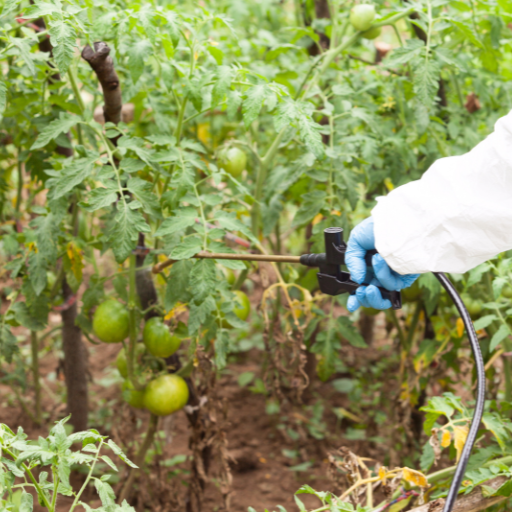
To sprinkle Epsom salt on your tomato plants correctly, a well-rounded approach that suits the needs of individual plants is suggested. To make a leaf spray, begin by dissolving one tablespoon of Epsom salt in a gallon of water. This should be sprayed directly on the leaves once per month to allow magnesium absorption through them. In addition, when applying it on soil, mix with one or two tablespoons of Epsom salts per plant at the base especially during planting and fruiting season. However, care should be taken not to over-apply since excess magnesium can hinder other essential mineral uptake and as such, soil and plant health checks should always guide subsequent applications for maximum productivity.
How Much Epsom Salt to Use Per Gallon of Water?
For best results possible, 1-2 tablespoonfuls are commonly recommended per gallon of water. This allows enough magnesium but not an imbalance of nutrients, hence keeping in good condition general vitality amid major growth moments such as fruiting and flowering for these crops. Regular applications such as this by foliar spraying or soil drenching promote healthy growth and high yields among tomato plants. Remember to follow a consistent program while making adjustments based on observations made about plant health trends and soil state.
How Often Should You Add Epsom Salt to the Soil?
The frequency depends mostly upon specific nutritional requirements as well as soil conditions, which determine which tomatoes you grow. According to top agronomic sources, it is advisable that you begin with this product at the start of planting and then during blooming time, when fruits begin forming; thus, a 4- 6 week interval between each application during growing periods becomes frequent.
Initial tests conducted on soils deficient in magnesium ground will help with more accurate programs for adding fertilizers like Epsom salt.
A typical rate for soil application is 1 tablespoon per foot plant height based on technical parameters from agronomic studies (see table). An adequate supply of magnesium is guaranteed at this dosage rate without the risk of nutrient lockup or soil testing and foliar analysis can be done to adjust on the timing and application rates. This way, a systematic approach ensures a balance in nutrients that are required for healthy growth and maximum yield.
Methods for Adding Epsom Salt
- Foliar Spray Method: Dissolve Epsom salt in water and spray leaves directly with the solution. Top agronomy sources recommend using 1 tablespoon of Epsom salt in 1 gallon of water. This solution has been found to enhance leaf nutrient uptake, which quickly corrects a magnesium-deficient situation.
- Soil Drench Method: Another effective method is combining Epsom salt with water and applying it directly around the plants’ base. Similarly, leaders in horticultural supplies recommend using a gallon mixture containing one tablespoon of Epsom salts. When applied like this, magnesium goes straight to the root zone, where plant health is enhanced.
- Dry Application Method: This method is dry in nature and involves sprinkling Epsom salt directly into the soil. According to experts, the recommended depth for working the salt into the soil is six inches from the top, at a rate of about one tablespoon per foot of plant height. This technique is often employed during planting or as an initial treatment where magnesium levels in soils are particularly low.
Can Epsom Salt Be Combined with Other Fertilizers for Tomatoes?
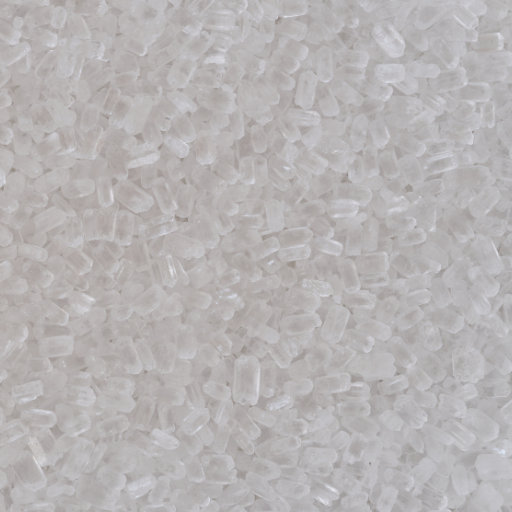
You can combine Epsom salts with other fertilizers for tomatoes. When used together with a well-balanced fertilizer regime, Epsom salts will supply tomato plants with magnesium and sulfur without reducing the effectiveness of other nutrients. Farmers must follow recommended rates of application to avoid excessive fertilizer use. Enhancing plant growth through this combination that builds on plant vigor and resistance to diseases such as blossom end rot is also possible.
Epsom Salt Mixed with Organic Fertilizer
Tomato plants are very highly beneficial when combined with the organic fertilizer mixed in the Epsom salt. Manure or bone meal for instance provide an array of essential nutrients necessary for healthy development of plants. Consequently this assures presence of two vital micronutrients; magnesium and sulfur delivered by Epsom salt. By enhancing nutrient availability and uptake, this synergy boosts tomato plant health and yields. This means that following suggested application rates carefully is critical in preventing nutrient imbalances and over-fertilization, thus showing that combining Epsom salt with organic fertilizers in an integrated manner can support vigorous growth and high-quality fruit production.
Advantages of Mixing Fertilizers for Tomatoes
Mixing fertilizers for tomatoes brings out a balanced soil environment which integrates various nutrient sources’ strengths to ensure optimal plant performance. Customizing a nutritional profile has been cited by many reputable sources as the main advantage associated with mixing fertilizers (2012). An example includes blending either organic or synthetic forms alongside Epsom salt supplies all essential macronutrient sources as well as trace elements (Agri-Food Canada 2013). To define just some technical aspects surrounding mixing, proper ratios must be maintained so as to prevent nutrient lock-out and toxicity risks prevailing in case there are imbalances across two or more nutrients—for example nitrogen-phosphorus-potassium configurations (NPK) typical for tomatoes are set at 5-10-10 (2013). Moreover, it is important to maintain a magnesium concentration of around 1% in relation to the entire nutrient mix so as to guard against its deficiency and while avoiding excessive usage that may result into an imbalance with calcium absorption. Such changes must be supported by timely soil analysis and recommended application rates to ensure that the combined strategy optimally promotes tomato plant health, yields and fruit quality.
What Are the Risks of Using Epsom Salt on Tomato Plants?
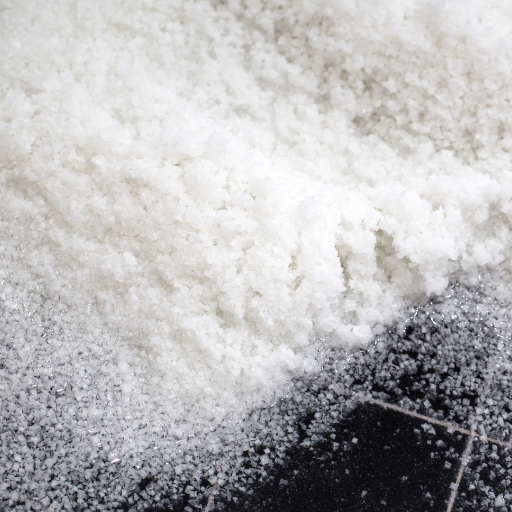
Epsom salt, composed of magnesium sulfate, can benefit tomato plants but also carries some risks. Overuse of Epsom salt can result in an accumulation of magnesium in the soil that could interfere with the plants’ calcium uptake, leading to problems such as blossom end rot. Furthermore, excessive amounts of magnesium may disrupt the overall nutrient balance within the soil making it deficient in key elements like nitrogen and potassium. Another risk is that pH levels may change thereby creating a hostile environment for optimum growth. Therefore, close monitoring and following recommended dosage are essential to avoid these possible challenges whilst using Epsom salt as a way to support rather than hinder tomato plant health.
Potential concerns linked to high use of Epsom Salt
Over application of Epsom Salt can have several agronomic implications. The major problem associated with too much magnesium from Epsom salt is imbalance of nutrients especially calcium in the soil. This occurs when more magnesium than calcium is present; resulting in blossom end rot on tomato fruits whereby dark sunken lesions form at the blossom end. Technically, magnesium will outcompete calcium since they compete for uptake and when the magnesium level exceeds 6-10% CaECCEC (calcium deficiency appears).
In addition, nitrogen and potassium can be lacking during this condition, resulting from nutritional imbalance as well. Increased magnesium can replace these crucial minerals, reducing their availability to plants, interfering with growth and lowering total output yield. Soils that contain more than 100 ppm Mg act as inhibitors to nitrate uptake necessary for vegetative and reproductive development in tomatoes.
The other important determinant in soil pH conditions. By large quantities used, sometimes Epsom salts may lower soil pH value, making it more acidic. Tomatoes grow best at slightly acidic to neutral pH values ranging between 6.0 – 6.8 deviations from which may affect nutrient uptake and microbial activity in soils, thus causing poor plant health and lower productivity. Following soil testing recommendations, wherein magnesium concentration is limited to less than 1% of total nutrient profile, can help mitigate these risks consequently allowing for balanced nutrient availability.
Symptoms of Magnesium Sulfate Deficiency and Surplus
When checking tomato plants for magnesium sulfate deficiency, the most common symptoms are interveinal chlorosis, whereby the tissue between the veins turns yellow while veins look green. This usually starts with older leaves. Curling upwards of the leaves and the appearance of necrotic spots can also be observed. The soil’s magnesium content should be technically monitored because concentrations below 25 ppm generally denote magnesium deficiency. An appropriate response in such cases could involve applying a balanced fertilizer or a specific magnesium supplement.
On the contrary, excess quantities are marked by symptoms like dwarfism and change in leaf color where they become dark green or purplish black.. A high reading (over 100 ppm) on Mg content through soil testing indicates that there is too much Mg which is antagonistic to nutrients at CaKP levels in the soil limiting calcium uptake, potassium, and nitrogen. In order to solve this issue leaching or applying gypsum (calcium sulphate) improves nutrient availability. It is recommended that a cation exchange capacity (CEC) with around 6-10% magensium levels be maintained to as not too much nor too little negatively influence tomato plants’ health.
How to Address the Possible Problems Arising from Overuse
Excessive magnesium sulfate in the soils can lead to tiredness, and this may be dealt effectively with through well-calculated steps. One such method involves soil leaching, whereby water is used to wash away soil, reducing the concentration of extra magnesium. This method is effective, especially when combined with efficient drainage systems that prevent water logging. The soil water holding capacity should be less than 30% as a technical parameter for optimum leaching efficiency.
Another remedy, application of gypsum (calcium sulfate) is practical. Gypsum replaces the excess magnesium on the soil’s cation exchange sites with calcium thereby mitigating magnesium toxicity. When using gypsum it would be advisable to apply about 1,000 – 2,000 pounds per acre considering that adjustments are required depending on the type of texture and minerals composing a particular land.
Finally, adjusting soil pH can also help manage magnesium levels. Most crops, including tomatoes, thrive in a slightly acidic to neutral pH range between 6.0 and 7.0. Using pH modifiers like lime (calcium carbonate) that supply calcium while raising soil pH simultaneously will improve magnesium balance and mitigate excessive accumulation of this element in soils. Carry out frequent testing of pH to maintain it within the optimal range for effective remediation.
Practical Tips for Gardeners Using Epsom Salt
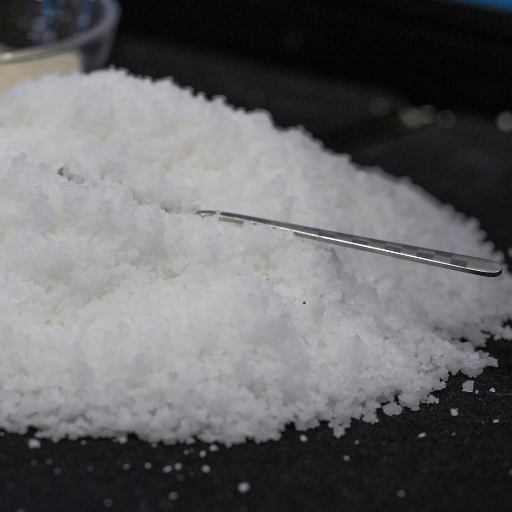
When using Epson salt in gardening, start by understanding that its main component is magnesium sulfate. This helps with the uptake of nutrients, germination of seeds and production of chlorophyll which are significant for plant health. First check magnesium levels in the soil to determine whether application is necessary. Dissolve one tablespoon of Epsom salts in a gallon of water; if you want to use general-purpose fertilizer, then apply it once a month to keep away from lack of magnesium. Note that excess can cause nutrient imbalance thus adhere strictly to recommended doses. At planting time, put a tablespoon full of Epsom Salt directly into each hole before planting and this will encourage strong root development. Regular monitoring and moderation are necessary to effectively enjoy the benefits of Epsom Salt in the garden.
Common Mistakes When Using Epsom Salt
One mistake people often make when using Epson salt as a fertilizer is over-application. Excessive magnesium in soil results in an imbalanced nutrient state especially when calcium and potassium uptake is concerned which are vital for healthy plant growth. To avoid this problem, one should stick religiously to the recommended dosage of 1 tablespoon per gallon used every month. Additionally, excesses will compact soils, thus reducing aeration, which negatively impacts root health.
Another common mistake is putting Epsom salt without carrying out soil test first; they become ignorant on their present level or amount or magnesium like other nutrients. Without conducting this survey, farmers may add excessive amounts of magnesium where there was nutritive equilibrium that may harm plants grown in such conditions because they have been disturbed by a sudden increase in fractionation ratios inclining towards vegetative tissue growth rather than the reproductive part formation process.Growers who do not accomplish commit to all these requirements often produce crops that have poor yields since the majority contain few grains during the harvesting period.This culture’s pH value should range between 6 and 7 prior to ensuring correct nutrition absorption.
Lastly some individuals use Epsom salts as a panacea for all plant diseases. Epsom salt is specific to treating magnesium deficiency and should not be used indiscriminately. It is possible that an overemphasis on this product may cover up other soil conditions with symptoms requiring completely new kinds of remedies. Correctly diagnosing plant problems and applying the appropriate treatments based on the deficiencies are important.
The right dosage, soil testing and application targeting are crucial in gardening using Epsom salt without further complications.
Best Practices for Epsom Salt Application
When adding Epsom salt into your garden routine, observe some best practices that will maximize its benefits while moderating any potential risks. First, follow the recommended dose of 1 tablespoon per gallon. This dilution is ideal during regular monthly applications. Secondly, you need to carry out soil test prior to adding it so that you can determine current levels of magnesium. Soil tests are typically done through local extension services or at home if one have kits available to them.The aim is keeping pH values of soils between 6 & 7 which allows magnesium together with other essential nutrients get absorbed easily.
It is also advisable that when it comes to using Epson salts farmers should consider crops’ needs first before applying; tomatoes, peppers and roses which are mostly attracted by magnesium than other plants can be more responsive after its application. Always monitor post application plant health and growth patterns as there might be negative effects such as nutrient imbalance or compaction of soil.
To recognize the established technical aspects, it is important to reiterate that unrestrained use of Epsom salt as a general solution is not effective and might be risky. Rather, it should be applied with respect to established magnesium deficiencies evidenced in soil tests. Dosage may have to be adjusted depending on the outcome of such tests. In this way, gardeners can apply Epsom salt to maintain plant health while maintaining the delicate equilibrium of soil nutrients.
Frequently Asked Questions (FAQs)
Q: Does Epsom Salt Help Tomato Plants Grow?
A: Yes, Epsom salts are good for tomato plants because they provide essential nutrients like magnesium and sulfur which tomatoes need for healthy growth and fruit production. However, use it wisely as part of a balanced fertilization plan.
Q: Can I use Epsom Salt for plants with magnesium deficiency?
A: Yes, Epsom salt is an excellent source of magnesium and can help plants with magnesium deficiency by improving nutrient absorption and enhancing overall plant health.
Q: How often should I add Epsom Salt to my tomato plants?
A: It’s recommended to apply Epsom salt every two weeks throughout the growing season. Dissolve one tablespoon of Epsom salt in a gallon of water and apply to the base of each plant.
Q: Is a soil test necessary before using Epsom Salt on tomato plants?
A: Conducting a soil test can help determine the existing nutrient levels in your soil and if your plants need additional magnesium or sulfur. This can prevent over-fertilization and potential plant damage.
Q: Can Epsom salt be used for seed starting with tomatoes?
A: While Epsom salt can help seedlings develop strong roots and reduce transplant shock, it should be used sparingly. For seed starting, mix a small amount into the potting soil to give seedlings a good start.
Q: Can Epsom Salt help with pest control in my vegetable garden?
A: While Epsom salt isn’t a primary pest control solution, it can help improve plant health and vigor, making them less susceptible to pests. For dedicated pest control, consider other solutions like neem oil or insecticidal soap.
Q: Is Epsom Salt effective for tomato plants late in the growing season?
A: Yes, applying Epsom salt late in the growing season can help boost fruit production and prevent blossom end rot by ensuring the plants have adequate magnesium and sulfur.
Q: What are some signs that Epsom Salt is helping my tomato plants grow?
A: Healthy tomato plants will appear bushy and vibrant with lush green foliage and an abundance of blooms. Consistent application will result in better root and cell development, ultimately leading to a more productive harvest.






